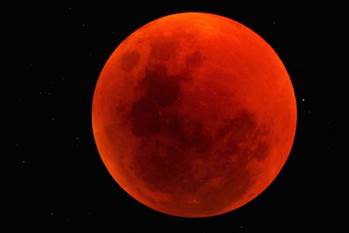BLOOD MOON

Disclaimer: Copyright infringement not intended.
Context
- Skywatchers from East Asia to North America will be able to see the rare “Beaver blood moon”.
Must Read, before you read further: https://www.iasgyan.in/daily-current-affairs/lunar-eclipse
Blood Moon
- A total lunar eclipse occurs when the Earth casts its shadow completely over a full moon, blocking reflection of all direct sunlight from the lunar orb and dimming the color of the moon to a reddish hue, hence the term “blood moon.”
- This is only possible when the orbits of the Earth, moon and sun align so that the moon is directly behind Earth relative to the sun. Otherwise, the moon passes above or below Earth’s shadow because its orbit around Earth is usually tilted relative to Earth’s orbit about the sun.
Why red?
- The reddish appearance of the lunar surface — the moon does not entirely disappear from view — is caused by rays of sunlight around the outer edge of the eclipse shadow, or umbra, being filtered and refracted as it passes through Earth’s atmosphere, bathing the moon indirectly in a dim copper glow.
- The degree of redness depends on atmospheric conditions that vary with levels of air pollution, dust storms, wildfire smoke and even volcanic ash.
Rarity
- Total lunar eclipses occur, on average, about once every year and a half. But the interval varies.
Beaver Moon
- Each of the year's full moon gets a nickname. Any full moon within the month of November is called a Beaver Moon. Thus, this particular lunar event has earned the nickname “Beaver Blood Moon Eclipse.”
- The Beaver Moon got its name because it falls at that time of the year when beavers are working continuously to build themselves dams for the winter.
https://indianexpress.com/article/explained/what-is-beaver-blood-moon-explained-8255565/




1.png)
